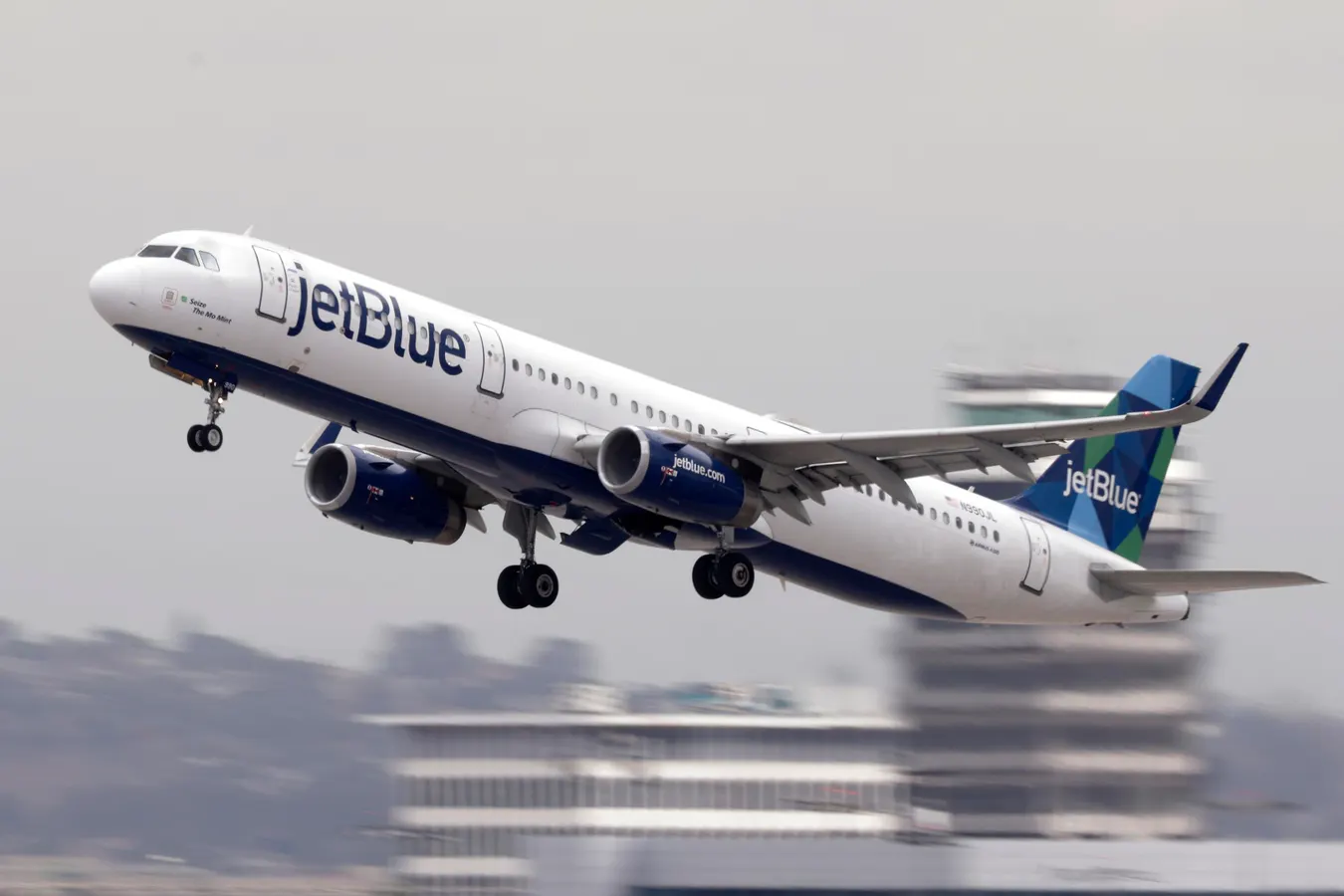Copyright forbes

JetBlue stock take a nosedive as the management gives a cautious 2025 outlook. Rising costs and intense competition could be a major concern. (Photo by Kevin Carter/Getty Images) Getty Images Despite posting smaller-than-expected loss for 3Q 2025, JetBlue Airways Corporation (NASDAQ: JBLU) stock took a nosedive of about 12% over a cautious 2025 outlook and concerns over higher costs and intense competition. Though the operating revenue came in line with the analyst expectations at $2.32 billion, it was down 1.8% year-over-year (y-o-y), largely due to softness in core cabin segment. Amid the slowdown in the U.S. domestic market and growing operating costs, JetBlue’s management appears conservative in its 2025 targets and will need to optimize its capacity to mitigate the impact of rising costs. The low-cost carrier will also continue to focus on the high-margin premium services through its JetForward strategy, which unfortunately has not reaped much benefit over the last few quarters. Operational Performance The New York-based airline ended the third quarter with 283 aircraft – all A220s and A320-family jets – in its operating fleet. Despite weather and air traffic control challenges in July, strong performance in August and September cushioned the quarter’s disruptions. System capacity, also known as available seat miles (ASMs), increased 0.9% y-o-y, at the top of the company’s revised guidance range. Load factor stood at 85.1%, slightly lower than the prior year’s 86.6%. Revenue per available seat mile (RASM) declined 2.7% y-o-y but was still better than the company’s initially forecast due to robust close-in bookings and continued strength in premium products. The airline’s Mint® offering continued to outperform the core cabin, with premium RASM six points higher than core, underlining the growing preference among travellers for upgraded seating and experiences. JetBlue’s TrueBlue® loyalty program also delivered strong momentum, with revenue up 12% y-o-y, driven by double-digit growth in co-brand credit-card sign-ups and higher loyalty redemption activity. Customer satisfaction continued to trend upward, with the Net Promoter Score up low-single digits for the quarter and double digits year-to-date, underscoring the carrier’s progress in operational consistency and service quality. Operating expenses rose modestly by 0.8% y-o-y to $2.42 billion, as savings from lower fuel costs were partially offset by higher maintenance expenses and labor costs. JetBlue’s average fuel price was $2.49 per gallon, 7% lower y-o-y, contributing to a 7.6% decline in total fuel expense to $539 million. Excluding fuel, non-airline costs, and special items, CASM ex-fuel increased 3.7%, due to ongoing inflationary pressures in wages and airport rents. At the end of the quarter, the carrier held cash and cash equivalent of $2.4 billion against total debt of $8.5 billion. Capital expenditure was $281 million for the quarter, much below the company’s revised estimate of $325 million. JetBlue also completed the retirement of its Embraer E190 fleet, transitioning to an all-Airbus lineup that will enhance fuel efficiency and simplify maintenance operations going forward. MORE FOR YOU Outlook and Strategy Management remains cautious heading into the final quarter of the year. JetBlue expects capacity to range between a decline of 0.75% and an increase of 2.25% y-o-y, reflecting measured capacity discipline as the airline continues to balance demand recovery with network optimization. Unit revenue or RASM is expected to decline between 4% and flat compared to the prior year, as the softness in core cabin yields is likely to be offset by stronger premium demand and improved booking. On the cost side, the carrier anticipates non-fuel unit costs (CASM ex-fuel) to rise between 3% and 5% y-o-y, due to higher wages, landing fees, and technology investments, partially offset by savings from its JetForward initiatives. The airline expects average fuel prices to range between $2.33 and $2.48 per gallon during 4Q 2025, in line with its hedging assumptions and current market trends. For full year 2025, the airline improved the midpoint of its cost guidance by half a point, now targeting CASM ex-fuel growth of 5% to 6%, even as capacity remains roughly one point lower than initially planned. Capital expenditure is expected to decline in FY 2026 through the end of the decade, mostly below $1 billion annually, as the airline pivots to a capital-light strategy and ramps up JetForward. The airline expects to generate $290 million of incremental EBIT from JetForward by year-end, building upon the $180 million achieved to date. The JetForward initiative include AI-driven customer self-service, advanced crew-management tools, and data-led fuel optimization. Network Expansion and Product Enhancements JetBlue continues to strengthen its East Coast leisure franchise, particularly in Fort Lauderdale, where it plans to launch 17 new routes and add frequencies on 12 existing markets in 2025, representing a 35% y-o-y in schedule. The carrier also announced new service from New York–JFK and Boston–Logan to Vero Beach and Daytona Beach, as well as new connections from Tampa and Fort Myers to Islip, expanding its footprint across Florida. As part of its product evolution, JetBlue will roll out a domestic first-class product in 2026, retrofitting 25% of its non-Mint fleet next year and completing the majority by 2027. Its new JetBlue Lounges at JFK and Boston are set to open in late 2025 and 2026, respectively. Moreover, the airline has announced a partnership with Amazon’s Project Kuiper to enhance in-flight connectivity beginning in 2027, reinforcing its position as a leader in onboard digital experience. Furthermore, the airline has recently commenced its collaboration with United Airlines, Blue Sky, which enables JetBlue to offer point accrual and redemption across loyalty ecosystems, resulting in a double-digit increase in card acquisition. This partnership aims to enhance customer loyalty and expand market reach. Although JetBlue delivered a decent third-quarter performance, the broader U.S. airline sector continues to navigate a mixed demand environment and pricing pressure in the core cabin. While the company has managed to establish itself as a leading carrier in Fort Lauderdale, it is still struggling to bring its earnings in the black despite cost control measures and optimizing its capacity. The airline aims to focus on premium services to expand its top line while managing its costs and capacity. However, successful execution of JetForward, alongside the ramp-up of Blue Sky and network expansion in Fort Lauderdale, will be crucial for the company to regain investor confidence and a meaningful share in the U.S. aviation space. Editorial StandardsReprints & Permissions



